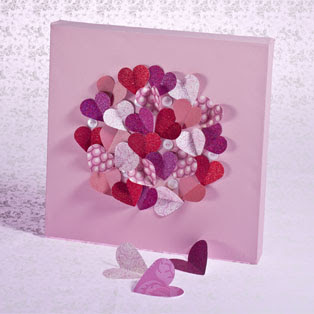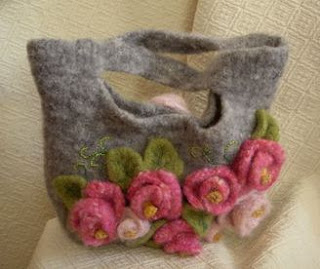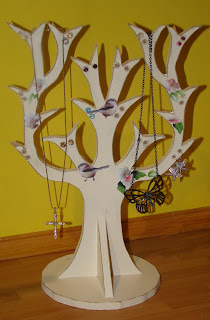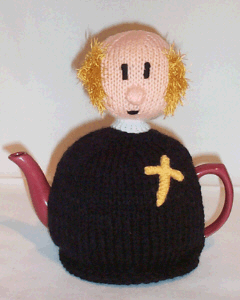Tuesday 24 April 2012
Knit a Kermit the Frog Costume for Baby like Walters
Following the new Muppets film, I wanted to knit a baby’s hooded cardigan that looked like Kermit, a bit like Walter the newest Muppet wore.
I already had a bought pattern for a hooded cardigan (size 18inch chest) which I knitted in a vibrant Kermit the Frog green, but then I needed to knit a yellow collar with triangles and the boggy eyes. Here is how I knitted them...
Kermits Eyes (knit 2)
Using size 10 (UK size) 3.25mm needles, cast on 12 stitches in white double knitting wool.
1 row: Knit
2 row: Purl to last 3 stitches and turn.
3 row: sl1, knit to last 3 stitches and turn.
4row: sl1, purl to end.
Repeat these 4 rows 5 more times.
Knit a row and cast off.
To make the eyes up
The eyes will want to curl themselves into half doughnut shapes, let them and stitch the centre closed so that it forms a complete dome. Stitch the eyes to either side of the hood and lightly stuff just so that the stand.
Then take black wool and blanket stitch a circle in the eye. You can use the turning points in the knitting as a guide to create the perfect circle. The on the left and right of the pupil, blanket stitch two smaller semicircles, to create that line that goes through the pupil.
Kermit’s Collar
Using size 8 (UK size) 4.0mm needles, cast on 54 stitches in lemon double knitting wool.
Knit 2 rows.
Knit a triangle...
1 row: Knit 9 stitches and turn, you will only be knitting on these 9 stitches to form the triangle.
2 row: K2, purl to last 2 stitches, K2
3 row: Knit
4 row: K2, purl to last 2 stitches, K2
5 row: K2, K2 tog, K1, K2 tog, K2
6 row: K2, purl to last 2 stitches, K2
7 row: Knit
8 row: K2, purl to last 2 stitches, K2
9 row: K2, K3 tog, K2
10 row: K2, purl to last 2 stitches, K2
11 row: Knit
12 row: K2, purl to last 2 stitches, K2
13 row: K1, K3 tog, K1
14 row: Knit
15 Row: K3 tog, finish off.
Rejoin the wool to the remaining stitches and work on the next 9 stitches in the same way.
Continue working in this way until 6 triangles have been worked.
Sew in all the wool ends and then loosely pin and sew the collar around the neck of the cardigan.
Thursday 2 February 2012
How To Make... Paper Flower Decorations
Learn how to make beautiful paper flower decorations. Follow our simple step by step instructions to create handmade decorations suitable for any occasion. Visit our Ideas Library for instructions on what you need and how to make these paper flower decorations.
Check out the videos demonstration of how to make these beautiful Paper Flower Decorations.
Check out the videos demonstration of how to make these beautiful Paper Flower Decorations.
Friday 27 January 2012
How to Make a Love Heart Shaped Boiled Egg For Valentines Day
Show your Valentine that you love them with eggs!
This is such a cute idea and would make and Valentines lunch-box or salad a little bit special and leave your Valentines amazed at how you did it.
To make a heart shaped boiled egg, you will need...
a hard boiled egg - freshly cooked.
A section of milk carton cardboard about the size of a postcard, washed and dried.
A chopstick.
Two elastic bands.
First shell the egg and rinse off any odd bits of shell.
Pop the egg into the milk carton making sure that the fold of the carton is at the bottom.
Then rest your chopstick along the top the the egg and fix an elastic band on the end. do the same to the other end. Its a good time now to arrange the chopstick so that it is nicely central in the egg and will create a pleasing heart shape.
Now put the egg in the fridge for an hour to cool and shape.
Take the egg out of its card and cut in half - Impressive no?
This is such a cute idea and would make and Valentines lunch-box or salad a little bit special and leave your Valentines amazed at how you did it.
To make a heart shaped boiled egg, you will need...
a hard boiled egg - freshly cooked.
A section of milk carton cardboard about the size of a postcard, washed and dried.
A chopstick.
Two elastic bands.
First shell the egg and rinse off any odd bits of shell.
Pop the egg into the milk carton making sure that the fold of the carton is at the bottom.
Then rest your chopstick along the top the the egg and fix an elastic band on the end. do the same to the other end. Its a good time now to arrange the chopstick so that it is nicely central in the egg and will create a pleasing heart shape.
Now put the egg in the fridge for an hour to cool and shape.
Take the egg out of its card and cut in half - Impressive no?
Wednesday 25 January 2012
Decorated Tote Bags for Valentines Day
 This craft design is from the hobbycraft.co.uk idea's library.
This craft design is from the hobbycraft.co.uk idea's library.These really sweet tote bags are so cute for Valentines day and all year round. And if you don't have a Valentine, you could make one for yourself!
What You Need:
LOVE' TOTE BAG
Calico bag
A5 Acetate sheets 10-pk
Dylon black fabric paint
Proarte paint brush (no barcode) Craft knife
CAT TOTE BAG
Calico bag
Fabrics, fat quarter pack
Embroidery thread, (310) black
Red satin ribbon
Red velvet ribbon
Red bead
Spray adhesive
This Project
Allow: 45 Minutes
Skill Level: Beginner
LOVE' TOTE BAG INSTRUCTIONS:
Cut four A5 stencil shapes from the acetate using the picture as a guide.
Press the tote bag and line it with a few sheets of paper or some cardboard
Position the stencils and secure with a few pieces of sticky tape (the centre of the O can be held in place with your finger, or use double sided tape)
Lightly stencil the black dye building up the colour as you go. Keep your brush quite 'dry' for this
Allow to dry before peeling off the stencils.
CAT TOTE BAG INSTRUCTIONS:
Press the tote bag
Cut the A5 stencil shapes from the acetate using the picture as a guide.
Spray adhesive lightly on the reverse and position the shapes on the bag
Take a running stitch around the edge of each shape to hold it in position.
Create the cat's collar using red velvet ribbon and a bead, sewn in place
Decorate the hearts with bows made from red satin ribbon
Wednesday 18 January 2012
Painted Heart Canvas
I found this cute Valentines Craft idea on the Hobbycraft website. I thought this would be nice to give as a valentines card. I think most girls would also love a picture like this one for their bedroom and they can make it for themselves in an afternoon
What You Need:
Box canvas
Heart craft punch
Acrylic paint
Coloured and textured 12" x 12" papers
Tacky glue
This Project
Allow: 1 Hour plus drying time
Skill Level: Intermediate
Paint the canvas including the sides with the acrylic paint and leave to dry.
Meanwhile cut plenty of heart shapes from the coloured papers. Use your thumbnail to crease each heart down the centre for a 3D effect.
Using a pencil and a small plate, lightly draw a circle guide on the canvas.
Start to attach the hearts by placing a dot of glue on the centre of each heart that you creased in step 2 and continue until the circle is filled.
Once completely dry your canvas is ready to hang or to give.
What You Need:
Box canvas
Heart craft punch
Acrylic paint
Coloured and textured 12" x 12" papers
Tacky glue
This Project
Allow: 1 Hour plus drying time
Skill Level: Intermediate
Paint the canvas including the sides with the acrylic paint and leave to dry.
Meanwhile cut plenty of heart shapes from the coloured papers. Use your thumbnail to crease each heart down the centre for a 3D effect.
Using a pencil and a small plate, lightly draw a circle guide on the canvas.
Start to attach the hearts by placing a dot of glue on the centre of each heart that you creased in step 2 and continue until the circle is filled.
Once completely dry your canvas is ready to hang or to give.
Wednesday 11 January 2012
The New Craft Craze of Felting
By Deanne Blackhurst
If you've never heard the term felting, then you are not alone. Despite the fact that this process has been used for thousands of years, for many people the process of hand transforming carded wool into felt is a relatively new and unknown craft. In its most basic form, felt is created by taking wool roving and repeatedly squeezing it together by hand, applied pressure or with the use of small barbed needles. This force causes the wool fibers to tangle in millions of tiny knots that stay joined because the animal fibers are coated with microscopic scales. These tiny scales hold the fiber knots in place and create a fabric that is both tight and dense.
Felting works with any animal fiber including wool, alpaca and cashmere roving or yarn. Plant or synthetic based yarn or fibers don't have tiny scales and won't felt. Different types of fiber produce felt with different and unique qualities, so it's important to experiment a little before you begin a large and involved felting project.
Felting as a form of art is quite popular in many of the European countries; however it is only in the last decade that an interest in working with fibers to create decorations, scarves, purses and 3D art has begun to flourish in the U.S. Let's examine some different methods of felting and the type of results they produce.
Nuno Felting
Nuno felting is a Japanese technique that uses hot water, soap and a rolling process to meld loose animal fibers with sheer fabrics such as silk gauze. When mixed the silk retains its shape and stability but incorporates its original smooth texture with the added softness and rich color of the dyed fibers. You can find multiple examples of this process by searching the internet for felted silk scarves.
Flat Felting
Similar to the Nuno felting process, flat felting uses hot water and soap, but instead of binding the wool fibers to fabric, they are simply bound to each other. Different colors of fiber can be combined for an interesting marbling effect. For a thin flannel that is pliable and can be stitched together, only a couple of layers of fiber are used. For a thicker and more firm end product, more layers are piled on.
Knit Felting
Everyone knows that if you wash and dry a wool sweater, it will shrink making it unwearable, but that's what a number of crafters are trying for. Old wool, angora and merino sweaters are being recycled for new handicraft projects by purposely shrinking and felting them in the wash. Other clever crafters knit extra long and loose strips, and then felt the finished product in the washing machine. In both cases, these newly felted fabrics can then be sewn into bags, scarves or other felt products.
Needle Felting
This is a dry process where chunks of fiber are repeatedly stabbed with small barbed needle tools. This method is often used when creating small felt objects such as Christmas tree decorations or appliqués like flowers, stars etc...
3D Felting
Like sculpting with wet clay, 3D felt sculpting involves adding various shapes of and sizes of fibers to each other and needle felting them into place. Different color accents can also be added using the same technique. Soft sculptures including animal and doll figures can be created by roughly hand shaping clumps of fiber, and then detailing them with felting needles.
What makes the process of felting both fun and satisfying is the burst of creative energy that comes from taking various textures and colors and combining them into something new and beautiful like a one of a kind scarf or doll. Not up to felting yourself? Don't worry. There are many amazing felted products available to purchase online.
Deanne Blackhurst is a freelance writer for Alana Marketing, a company that specializes in promoting promising new artists and their products to the general public. They carry the Whimsical line of Sidney the sheep, a hand felted collectable gift for the yarn and craft lover. Visit us at http://www.alanamarketing.com
If you've never heard the term felting, then you are not alone. Despite the fact that this process has been used for thousands of years, for many people the process of hand transforming carded wool into felt is a relatively new and unknown craft. In its most basic form, felt is created by taking wool roving and repeatedly squeezing it together by hand, applied pressure or with the use of small barbed needles. This force causes the wool fibers to tangle in millions of tiny knots that stay joined because the animal fibers are coated with microscopic scales. These tiny scales hold the fiber knots in place and create a fabric that is both tight and dense.
Felting works with any animal fiber including wool, alpaca and cashmere roving or yarn. Plant or synthetic based yarn or fibers don't have tiny scales and won't felt. Different types of fiber produce felt with different and unique qualities, so it's important to experiment a little before you begin a large and involved felting project.
Felting as a form of art is quite popular in many of the European countries; however it is only in the last decade that an interest in working with fibers to create decorations, scarves, purses and 3D art has begun to flourish in the U.S. Let's examine some different methods of felting and the type of results they produce.
Nuno Felting
Nuno felting is a Japanese technique that uses hot water, soap and a rolling process to meld loose animal fibers with sheer fabrics such as silk gauze. When mixed the silk retains its shape and stability but incorporates its original smooth texture with the added softness and rich color of the dyed fibers. You can find multiple examples of this process by searching the internet for felted silk scarves.
Flat Felting
Similar to the Nuno felting process, flat felting uses hot water and soap, but instead of binding the wool fibers to fabric, they are simply bound to each other. Different colors of fiber can be combined for an interesting marbling effect. For a thin flannel that is pliable and can be stitched together, only a couple of layers of fiber are used. For a thicker and more firm end product, more layers are piled on.
Knit Felting
Everyone knows that if you wash and dry a wool sweater, it will shrink making it unwearable, but that's what a number of crafters are trying for. Old wool, angora and merino sweaters are being recycled for new handicraft projects by purposely shrinking and felting them in the wash. Other clever crafters knit extra long and loose strips, and then felt the finished product in the washing machine. In both cases, these newly felted fabrics can then be sewn into bags, scarves or other felt products.
Needle Felting
This is a dry process where chunks of fiber are repeatedly stabbed with small barbed needle tools. This method is often used when creating small felt objects such as Christmas tree decorations or appliqués like flowers, stars etc...
3D Felting
Like sculpting with wet clay, 3D felt sculpting involves adding various shapes of and sizes of fibers to each other and needle felting them into place. Different color accents can also be added using the same technique. Soft sculptures including animal and doll figures can be created by roughly hand shaping clumps of fiber, and then detailing them with felting needles.
What makes the process of felting both fun and satisfying is the burst of creative energy that comes from taking various textures and colors and combining them into something new and beautiful like a one of a kind scarf or doll. Not up to felting yourself? Don't worry. There are many amazing felted products available to purchase online.
Deanne Blackhurst is a freelance writer for Alana Marketing, a company that specializes in promoting promising new artists and their products to the general public. They carry the Whimsical line of Sidney the sheep, a hand felted collectable gift for the yarn and craft lover. Visit us at http://www.alanamarketing.com
Monday 5 December 2011
Make a Wooden Shabby Chic Jewellery Tree
The shabby chic jewellery tree is a hand made wooden tree that stores and shows off your earrings and necklaces. I painted this one in the shabby chic style, but you could just as easily paint the tree in gold or silver, or a funky hot pink.
The tree is easy to make and there is a handy template to draw around, simply click here to view the template.
To make the shabby chic jewellery tree you will need...
4mm MDF wood,
The template,
Wood glue,
Gold and cream paint,
Sand paper,
Clear varnish,
Some images of birds to decoupage the tree.
First print out the template and cut it out. The template is of half a tree. Draw around the tree onto the wood, and then flip the template over to draw the other half of the tree. You will also need to draw out the triangle templates on to the wood, these are the tree supports. You also need to make a base for the tree. I drew around a saucer with a shaped edge, but a circular saucer would be just as good.
Next you need to cut out the wooden pieces. I used an electric fret saw.
Once cut out, sand all the edges to make them smooth but don’t round off the edges.
On the template there the dots are shown, you need to drill holes at these points to hold the earrings. Once drilled, countersink each hole on both sides and sand off any untidiness.
Apply glue to the bottom trunk edge of the tree and stick it to the centre of the tree base. Apply glue to the two short edges of the tree supports and stick one at the centre front and one at the centre back of the tree. Leave to dry.
Apply 2 coats of gold paint to the edges of the branches on both sides of the tree.
Apply 2 coats of cream paint to the whole tree, supports and base.
When the cream paint is completely dry, lightly sand the edges of the tree to reveal the gold paint beneath. Do this on each edge of the tree on both sides.
Cut out the decoupage images, I chose birds and blossom. Arrange them in a pleasing way on both sides of the tree and glue in place with paper glue. And leave to dry.
Finally apply 2 coats of clear varnish to protect the paint work. Make sure that the varnish says on the time that it doesn’t have a yellowing finish; otherwise it will affect the colours of the finished tree.
The tree is easy to make and there is a handy template to draw around, simply click here to view the template.
To make the shabby chic jewellery tree you will need...
4mm MDF wood,
The template,
Wood glue,
Gold and cream paint,
Sand paper,
Clear varnish,
Some images of birds to decoupage the tree.
First print out the template and cut it out. The template is of half a tree. Draw around the tree onto the wood, and then flip the template over to draw the other half of the tree. You will also need to draw out the triangle templates on to the wood, these are the tree supports. You also need to make a base for the tree. I drew around a saucer with a shaped edge, but a circular saucer would be just as good.
Next you need to cut out the wooden pieces. I used an electric fret saw.
Once cut out, sand all the edges to make them smooth but don’t round off the edges.
On the template there the dots are shown, you need to drill holes at these points to hold the earrings. Once drilled, countersink each hole on both sides and sand off any untidiness.
Apply glue to the bottom trunk edge of the tree and stick it to the centre of the tree base. Apply glue to the two short edges of the tree supports and stick one at the centre front and one at the centre back of the tree. Leave to dry.
Apply 2 coats of gold paint to the edges of the branches on both sides of the tree.
Apply 2 coats of cream paint to the whole tree, supports and base.
When the cream paint is completely dry, lightly sand the edges of the tree to reveal the gold paint beneath. Do this on each edge of the tree on both sides.
Cut out the decoupage images, I chose birds and blossom. Arrange them in a pleasing way on both sides of the tree and glue in place with paper glue. And leave to dry.
Finally apply 2 coats of clear varnish to protect the paint work. Make sure that the varnish says on the time that it doesn’t have a yellowing finish; otherwise it will affect the colours of the finished tree.
Subscribe to:
Posts (Atom)














